

 It is sometimes strange to see how different trends and how media seem to affect our taste in wine. When they aired a popular TV series about Italian food Italian wines and travel to Italy became tremendously popular.
It is sometimes strange to see how different trends and how media seem to affect our taste in wine. When they aired a popular TV series about Italian food Italian wines and travel to Italy became tremendously popular.
We can see a somewhat opposite today with South Africa.
South Africa has for quite some years been very successful on the export market. The country was for example for several years Sweden’s most popular wine country (the biggest supplier). South Africa exported a lot of “good and cheap” wine, including bag-in-box, but it also sold very high-quality wines, from for example chenin blanc, pinotage (which is not necessarily “smoky”), syrah and more. But in recent years, South Africa has dropped dramatically. It went down to second place in Sweden and is perhaps going down yet one notch in the league table.
What has happened?
It is difficult to know, of course, one can only speculate.
One thing that is certain is that it is not because of the quality of the wines. South African wines are getting better and better. You can today find outstanding wines in South Africa, world-class wines. Top wines, both white and red. Read more on that in the Brief with Tim Atkin’s recent ranking.
One theory is that it is due to a lot of negative press. Not negative about the wines, but for the country, the economy and the society. Some while back a (contentious) report was published on the bad working conditions in agriculture (not in the vineyards though) that received much media attention. There is a lot of writing about the poverty that still exists in the country. On the corrupt politicians who like to call a swimming pool a fire water reservoir. And so on. Negative press.
One forgets that it is a country that not so long ago was a pariah in the world that nobody wanted to deal with. With a little perspective, it is a fantastic development that has taken place, and still takes place in South Africa.
When we then stop buying South African wine because we hear and read so much negative things about South Africa, what happens? Is it to placate one’s conscience?
What is certain is that it does not help the people to get out of poverty and misery when you stop buying their products.
But now, less negativity:
South Africa makes some fantastic wines, not only cheap bulk wine. (By the way, do you know what they call BiB in South Africa? Belleville Briefcase, after the Cape Town suburb of Belleville where the BIB is popular.) They make world class wines. South Africa has a spectacularly beautiful landscape that is worth a visit in its own, a nature and a wildlife that is unique. Lovely weather, especially during the dark northern winter. Good food, with eg their braai, the barbeque which is as much a party as a way to prepare food. And much more.
Support South Africa for example by joining us, Britt & Per, on our wine and food tour to South Africa in March. I promise that you will experience some amazing wines, and an exciting and a little wild country! A memorable experience in many ways. Can one imagine a better way to help a country’s economy, a country and people that much needs it?
Or support South Africa by drinking some of their top-quality wines at home.
In Europe, as we approach the wine harvest. In some parts it has already started in mid-August. Champagne will begin around September 7, some say. It has been a fantastic summer in much of Europe, but not everywhere. Downpours in the Languedoc for example, but not causing too much damage. It looks over all to be a very good year. More about the forecast in Brief.
For us at BKWine it has not been only rest this summer but also a lot of work. Today, exactly today, we hand in two new book manuscripts to the publisher. We are finishing two new wine books in quite a different style than the four we have done so far. They have taken up most of our summer actually, but it has been an exciting project. What the two new books are about? You can read more about later!
Britt & Per
PS: Recommend to your friends to read the Brief!
– – – – –
What’s on at BKWine Tours
- Bordeaux, September 23-27
- Douro Valley, October 21-25
- Chile and Argentina in South America, February 6-21, 2016
- South Africa, February 26 – March 7, 2016
For more information please contact us on email or on phone (we’re on French time), or go to our wine travel site on www.bkwinetours.com!
We also make custom designed wine tours – on-demand tours for you and a group of friends, for your company (maybe to scout new winegrowers?), for a special event… We can combine winery visits and wine touring with other activities: gastronomic workshops, visit to an oyster farm, truffles hunting, cheese making, and more. More info on the custom designed and bespoke BKWine wine tours and travel here!
Wine tours in Finnish: We also do wine tours in Finnish. And in German, Norwegian, Spanish… Do you want the latest news and updates on our wine travel activity? Subscribe here! (Second alternative BKWineTours.com)
From the World of Wine
2015 harvest in France
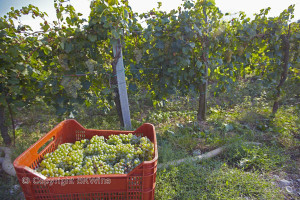 The summer has been nice and warm in France, not least in the wine regions. So the harvest is early this year. In Languedoc they picked the first grapes already on the 7th of August. In Champagne, the harvest will probably start on September 7. The French Ministry of Agriculture estimates that the grape harvest this year will be around 46 million hectolitres. This is a small increase compared with the average for the past five years. Some wine regions in the eastern part of the country though will be well below a normal harvest because of hot and dry weather.
The summer has been nice and warm in France, not least in the wine regions. So the harvest is early this year. In Languedoc they picked the first grapes already on the 7th of August. In Champagne, the harvest will probably start on September 7. The French Ministry of Agriculture estimates that the grape harvest this year will be around 46 million hectolitres. This is a small increase compared with the average for the past five years. Some wine regions in the eastern part of the country though will be well below a normal harvest because of hot and dry weather.
In Burgundy and Alsace, for instance, the vines have suffered from lack of water. Beaujolais is expected to have a yield of only 30 hectolitres per hectare. The Champagne harvest will probably be down by 11% compared to last year if they pick the estimated 2.6 million hectolitres. Bordeaux, however, is probably going to make a pretty normal harvest at 5.6 million hectolitres. Also Languedoc-Roussillon is doing well both for quantity and quality and is expected to harvest around 13 million hectolitres, an increase of 6% compared to 2014. Read more about the French wine harvest 2015: lavigne-mag.fr
South Africa is “dynamic and exciting”. Tim Atkin’s top wines
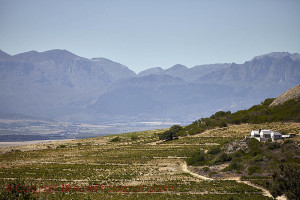 Tim Atkin, Master of Wine, says South Africa is the most dynamic and exciting wine country in the New World. He has recently published his third annual report on the South African wines. In the report he also makes a classification of the, according to him, best estates. He was inspired by the Bordeaux classification that was made in 1855 and has classified the estates in five different groups.
Tim Atkin, Master of Wine, says South Africa is the most dynamic and exciting wine country in the New World. He has recently published his third annual report on the South African wines. In the report he also makes a classification of the, according to him, best estates. He was inspired by the Bordeaux classification that was made in 1855 and has classified the estates in five different groups.
We are pleased that South Africa gets this attention. Sometimes you get the feeling that many consumers have not yet understood the diversity of wines that are produced here and have not understood that far from everything is simple bulk wines. Tim Atkin’s list is interesting. In his first group, called “first growths” after Bordeaux model, are: Kanonkop, Delaire Graff, Keermont and Reyneke in Stellenbosch, A.A. Badenhorst, Sadie Family, Rall, Porseleinberg and Mullineux in Swartland, Chamonix i Franschhoek, Alheit and Crystallum in Walker Bay, Paul Cluver in Elgin Valley, Klein Constantia in Constantia and Cape Point on the Cape Peninsula.
Do you want to get to know some of our favourite South African producers? Up close and personal? Then it is high time to register for our South African wine tour February 26 – March 7!
La Froscá Soave, Gini 2013 | Birgitta’s Wine of the Month
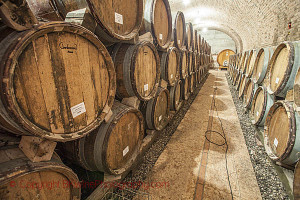 Make the summer stay a bit longer with a golden yellow glass of soave classico! The wine has a nose reminiscent of yellow plums, white flowers, peach and almonds. The taste is round, almost fat, filled with yellow fruit, hints of mineral and a touch of barrel. There is enough acidity to make the wine feel very fresh.
Make the summer stay a bit longer with a golden yellow glass of soave classico! The wine has a nose reminiscent of yellow plums, white flowers, peach and almonds. The taste is round, almost fat, filled with yellow fruit, hints of mineral and a touch of barrel. There is enough acidity to make the wine feel very fresh.
Goes very well with chicken, grilled fish or a tasty fish soup with aioli. But you can also enjoy it just as-is on its own with nothing to eat at all.
Around 16 euro.
Barefoot, the bestseller in US
Which wine is the bestseller in the US? Looking at the top-ten list just published by The Wine Economist, it is a wine called Barefoot, which is made by large wine company Gallo. The average price for this wine is $ 5.64 and Barefoot made $ 622 million between June 15 2014 and June 15 2015. If you look a little closer at the Barefoot brand you will see that there are at least 15 different Barefoot wines, in all colours and still and sparkling. Some are flavoured and there is even a Sparkling Champagne California. The Prosecco however seems to be from Italy.
There is only one non-US wine on the top-ten top-list, the Australian Yellow Tail. This one you can get in even more versions than Barefoot, I counted 29 different Yellow Tails on their site.
- Barefoot, Gallo
- Sutter Home, Trinchero Family Estates
- Franzia Box (5 litre box), The Wine Group
- Woodbridge by Robert Mondavi, Constellation
- Yellow Tail, Australien
- Kendall Jackson
- Beringer, Treasury
- Chateau Ste Michelle, Washington State
- Cupcake, The Wine Group
- Mènage à Trois, Trinchero
Read more on wineeconomist.com
Delas buys Jaboulet house and winery
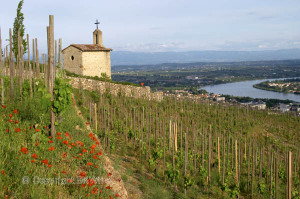 The big northern Rhône Valley wine merchant Delas, now owned by Champagne Deutz, recently bought the family Jaboulet’s beautiful estate in the centre of Tain l’Hermitage. The houses are to be renovated and the winery will be demolished and rebuilt again, in a more modern style. Jaboulet was run by the Jaboulet family from 1834 to 2006 when it was bought by the Frey family.
The big northern Rhône Valley wine merchant Delas, now owned by Champagne Deutz, recently bought the family Jaboulet’s beautiful estate in the centre of Tain l’Hermitage. The houses are to be renovated and the winery will be demolished and rebuilt again, in a more modern style. Jaboulet was run by the Jaboulet family from 1834 to 2006 when it was bought by the Frey family.
Jaboulet’s old manor house will be used by Delas for tastings and to receive customers. The new winery is expected to be ready for harvest in 2017. The Hermitage and Crozes Hermitage wines will be vinified there. Delas will keep their facility on the other side of the river, near Tournon. Most of Delas’ wines are made of purchased grapes but they also own 28 hectares of vineyards in Hermitage and Crozes-Hermitage. Read more on vitisphere.com
Champagne Roederer has its own nursery
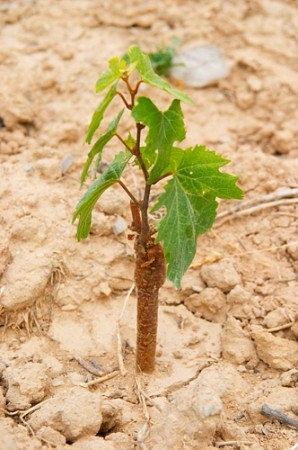 Champagne Louis Roederer has, as one of the few wine producers in France, been approved as a “pepiniériste privé”, ie as a private nursery for vines. Roederer will now grow their own American root stocks. On these they will graft cuttings taken from their own vineyards.
Champagne Louis Roederer has, as one of the few wine producers in France, been approved as a “pepiniériste privé”, ie as a private nursery for vines. Roederer will now grow their own American root stocks. On these they will graft cuttings taken from their own vineyards.
It is very unusual for wine producers to do all this themselves. Then normal procedure is to buy their vines from a nursery. When we vines are delivered they are already grafted and ready to be planted.
Today, there are a few producers who prefer to use cuttings from their own vineyard. Maybe they have particularly healthy and high quality vines in their vineyard. But even in those cases the grafting is in most cases done by a nursery. Read more on decanter.com. [divider_flat]
Successful harvest for Chile
2015 has so far been a good year for the Chilean wines. The harvest was a record-high 12.86 million hectolitres. It’s a good recovery from last year’s very low figure. It is even a bit higher than the previous record year, 2012. Chilean export of wines in bottle is also doing well, with growth both in volume and in value.
Cabernet Sauvignon is by far the largest grape variety in Chile with 35% of the volume. Then we have Sauvignon Blanc, Merlot and Carmenère. This latter grape is considered as the emblematic Chilean grape but it represents in fact not more than 9% of the volume. But it is a very interesting grape and some great wines are made with it. Read more on vitisphere.com.
Chile does indeed make some very exciting wines. You have the opportunity explore them in depth together with us, and the wines of Argentina, on our wine tour to Chile and Argentina in February.
Champagne Heucq Cuvée Antique 2005 | Britt’s Wine of the Month
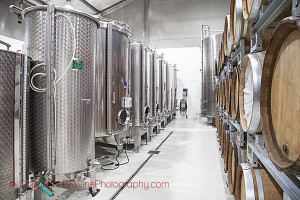 As soon as you put your nose in the glass you realize that this is not just any Champagne. The nose is delightfully complex. There are hints of toasted bread and ripe apples. The flavour is rich, deep and dense with ripe fruit and a certain softness. But the acidity and the freshness are there too. A delicious Champagne. I drank it as aperitif but it should be perfect also with food.
As soon as you put your nose in the glass you realize that this is not just any Champagne. The nose is delightfully complex. There are hints of toasted bread and ripe apples. The flavour is rich, deep and dense with ripe fruit and a certain softness. But the acidity and the freshness are there too. A delicious Champagne. I drank it as aperitif but it should be perfect also with food.
André Heucq manages the estate of six hectares, located in the Vallée de la Marne. The main focus of the Heucq family, besides making high quality Champagne, is to work as sustainable as possible, in the cellar and in the vineyard. Cuvée Antique is aged six years on the lees and the grapes are 50% Chardonnay, 30% Pinot Noir and 20% Pinot Meunier. champagne-heucq.com
Wine cooperatives, more common than you think
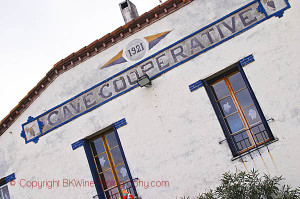 Often wine snobs pooh-pooh wine from wine cooperatives. But to tell the truth they drink wine from cooperatives more often than they think. A very large part of the wine production in the major wine countries comes from cooperatives. In France 51% of all wine is cooperative. And these wines slip into many people’s throats without them having the slightest clue about the origin. Many big wine producers use cooperative sub-suppliers. Many of the increasingly popular bag-in-box wines are most likely largely from cooperatives without it being visible on the labels. Nothing strange in that in and of itself. But many more quality-oriented wines in bottle may also partly come from the cooperative. Moreover, even if it says “domaine” or “chateau” on the label it can be cooperative.
Often wine snobs pooh-pooh wine from wine cooperatives. But to tell the truth they drink wine from cooperatives more often than they think. A very large part of the wine production in the major wine countries comes from cooperatives. In France 51% of all wine is cooperative. And these wines slip into many people’s throats without them having the slightest clue about the origin. Many big wine producers use cooperative sub-suppliers. Many of the increasingly popular bag-in-box wines are most likely largely from cooperatives without it being visible on the labels. Nothing strange in that in and of itself. But many more quality-oriented wines in bottle may also partly come from the cooperative. Moreover, even if it says “domaine” or “chateau” on the label it can be cooperative.
Read more about the importance of wine co-operatives in Per’s article on BKWine Magazine: Why wine co-operatives are so incredibly important.
Book Awards again, almost…: Gourmand Awards nominations for two of our books
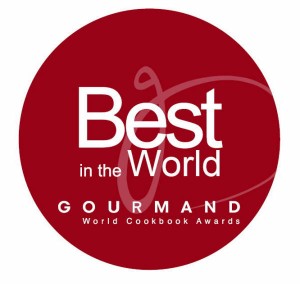 We almost won an award (or two!) in the international Gourmand Awards (Gourmand International World Cookbook Awards) but not quite. We are still very proud to have been nominated to the international finals with two of our books. A bit like being nominated to the Academy Awards (Oscars) for film stars… (No other parallels between wine writers and film stars though, certainly not what concerns wealth generation.)
We almost won an award (or two!) in the international Gourmand Awards (Gourmand International World Cookbook Awards) but not quite. We are still very proud to have been nominated to the international finals with two of our books. A bit like being nominated to the Academy Awards (Oscars) for film stars… (No other parallels between wine writers and film stars though, certainly not what concerns wealth generation.)
Read more on this on BKWine Magazine: Book Awards #2, almost…: Gourmand Awards nominations for two of our books. [divider_flat]
A challenger to Barolo? Sagrantino di Montefalco | Britt on Forbes
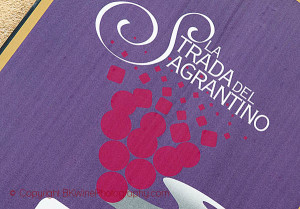 Umbria is a beautiful part of Italy. I already hear your comments, most of Italy is beautiful. This is true. So if I add that Umbria also has some stunning wines? OK, so does a lot of other Italian regions. But still, Umbria has some very rare wines indeed. Umbria is a small region but with distinct differences in wine styles. In the south of Umbria, vineyards are scattered around the pretty town of Montefalco. As in the more famous neighbour to the north, Tuscany, Sangiovese is grown here and used for the wine Montefalco Rosso. Many of these wines are very pleasant and affordable. Great food wine, light and elegant in style. However the big surprise comes from the Sagrantino grape…
Umbria is a beautiful part of Italy. I already hear your comments, most of Italy is beautiful. This is true. So if I add that Umbria also has some stunning wines? OK, so does a lot of other Italian regions. But still, Umbria has some very rare wines indeed. Umbria is a small region but with distinct differences in wine styles. In the south of Umbria, vineyards are scattered around the pretty town of Montefalco. As in the more famous neighbour to the north, Tuscany, Sangiovese is grown here and used for the wine Montefalco Rosso. Many of these wines are very pleasant and affordable. Great food wine, light and elegant in style. However the big surprise comes from the Sagrantino grape…
Read the resto of Britt’s article on BKWine Magazine: Sagrantino di Montefalco, a challenger to Barolo | Britt on Forbes. The article is originally published on Forbes.
Focus on minerals: Louis Roederer Brut Nature 2006
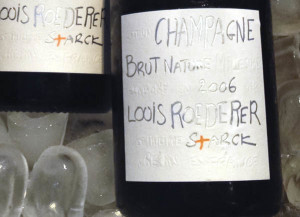 Product development is slow in the wine business. The most recent new product launch by Louis Roederer was in 1974. Now comes the next: Roederer Brut Nature 2006, designed by Philippe Starck. BKWine Magazine’s Tomas Eriksson reports: “The prestigious champagne house Louis Roederer has introduced a new champagne in its range. It is a vintage champagne in “brut nature” style, which means that it is made without any dosage, ie. with no sugar added. The first vintage of the Brut Nature to be launched is 2006.”
Product development is slow in the wine business. The most recent new product launch by Louis Roederer was in 1974. Now comes the next: Roederer Brut Nature 2006, designed by Philippe Starck. BKWine Magazine’s Tomas Eriksson reports: “The prestigious champagne house Louis Roederer has introduced a new champagne in its range. It is a vintage champagne in “brut nature” style, which means that it is made without any dosage, ie. with no sugar added. The first vintage of the Brut Nature to be launched is 2006.”
Read the rest of Tomas’ article on BKWine Magazine: Focus on minerals: Louis Roederer Brut Nature 2006.
New arrivals: Five new wine importers
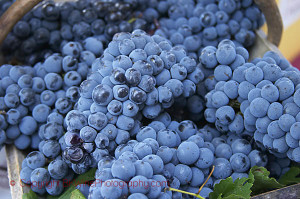 If you want to sell wine to Sweden you will need to go through an importer. At least if you want to sell through the monopoly retail shops or to restaurants. (Another option is internet wine sales direct to consumers that does not require an importer.) There are many, many importers in Sweden. I believe there are several hundred licenses. But only a small portion of those are actually active and an even smaller number is making any significant business. I recently discovered five new ones, some of them specialised in Spain.
If you want to sell wine to Sweden you will need to go through an importer. At least if you want to sell through the monopoly retail shops or to restaurants. (Another option is internet wine sales direct to consumers that does not require an importer.) There are many, many importers in Sweden. I believe there are several hundred licenses. But only a small portion of those are actually active and an even smaller number is making any significant business. I recently discovered five new ones, some of them specialised in Spain.
Read more on them in Per’s article on BKWine Magazine: Five new wine importers.
You can find all wine importers (i.e. all that we know of) in our Big List with All Swedish Wine Importers. Do you know of some we have missed? Let us know and we will add it!
Exclusive Californian wines from Kapcsandy Family Winery
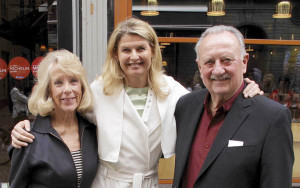 BKWine Magazine’s reporter Roland Eriksson reports from the best tasting of the spring: “By far the best tasting of this spring was when Lou and Roberta (Bobbie) Kapcsandy visited Stockholm. Lou is the American Dream personified. He managed to escape from Hungary and the embattled Budapest when it made an unsuccessful uprising against Soviet powers in 1956. Broke and without knowing a word of English, he came to the US where he worked in a bakery, played professional football, studied chemistry and served in the US Army. At the turn of the millennium in 2000 he managed to buy State Lane Vineyards in Yountville.” That became the foundation of the Kapcsandy Family Vineyards.
BKWine Magazine’s reporter Roland Eriksson reports from the best tasting of the spring: “By far the best tasting of this spring was when Lou and Roberta (Bobbie) Kapcsandy visited Stockholm. Lou is the American Dream personified. He managed to escape from Hungary and the embattled Budapest when it made an unsuccessful uprising against Soviet powers in 1956. Broke and without knowing a word of English, he came to the US where he worked in a bakery, played professional football, studied chemistry and served in the US Army. At the turn of the millennium in 2000 he managed to buy State Lane Vineyards in Yountville.” That became the foundation of the Kapcsandy Family Vineyards.
Read the rest of Roland’s the article on these exceptional wines on BKWine Magazine: Kapcsandy Family Winery, an in-depth tasting.
Yet more phenomenal wine producers in Languedoc, an insider’s tips
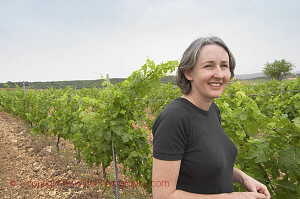 Languedoc is getting more and more exciting as a wine region by the day it almost seems. New producers settle here and prove – again – what fabulous wines can be made here. They follow in the path made by many established producers who continue making great wines. Few outsiders know the Languedoc wines as well as Rosemary George MW. She has written a ground breaking book on the wines of the south of France and spends a good part of the year there.
Languedoc is getting more and more exciting as a wine region by the day it almost seems. New producers settle here and prove – again – what fabulous wines can be made here. They follow in the path made by many established producers who continue making great wines. Few outsiders know the Languedoc wines as well as Rosemary George MW. She has written a ground breaking book on the wines of the south of France and spends a good part of the year there.
Read more on Rosemary George’s insider’s take on some of the new producers in the region in her article on BKWine Magazine: An insider’s tips on rising wine stars in the Languedoc.
Don’t be an egoist! Share with your friends and other wine enthusiasts! Forward the Brief to your friends! Suggest that they sign up for a free subscription !
© Copyright BKWine







